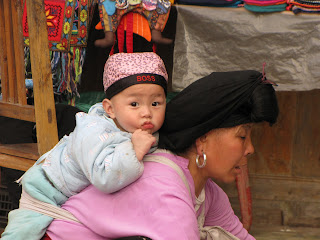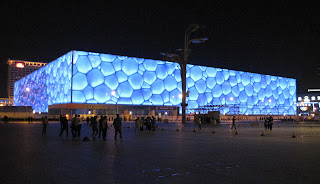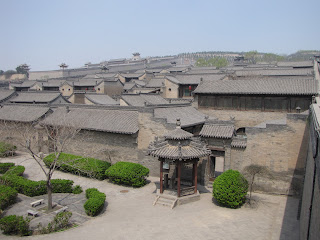On 7th May we left Nanning in Southern China by bus and arrived 10 hours later in Halong City in Vietnam. The border crossing was very organised and straight forward. We spent one night in Halong City and the following morning we went to the Tourist Boat Wharf. We wanted to get to Cat Ba, the only inhabited island in Halong Bay and we opted to get there on a tourist boat. 99% of the tourists that visit Halong Bay organise their trips in Hanoi, so we ended up being put on a boat with a bunch of tourists from Hanoi. We waited nearly 3 hours and were passed from person to person until finally we got on a boat. We had lunch, visited a nice cave, saw a small amount of Halong Bay, which has over 3,000 islands, is a UNESCO world heritage site and is totally gorgeous. We arrived in Cat Ba around 6pm and then we had to get transport to the other side of the island. The only available transport at this time of day was a minibus and the owner wanted $10 per person to drive 30 minutes. This is an enormous sum of money in Vietnam. There was 8 people needing transport and we all refused to pay $10, so eventually the man agreed to $5 each.
We stayed on Cat Ba for 5 nights and had a very enjoyable time there.
Cat Ba is a very popular weekend destination for people from Hanoi but
the rest of the time it's very quiet. During our time here we went on a
1-day kayaking trip and we had a great time kayaking around some of the
islands, observing the locals, who live on floating islands, and
swimming in the lovely cool water. It was a great place to relax after
our exhausting month in China and we met some other travellers who we
got on well with and hung out with in the evenings.
We left Cat Ba and got a bus to Hanoi, which we'd visited 15 years ago as part of a 3 week holiday to Vietnam. This time we experienced much less of a culture-shock, although the number motorbikes has increased dramatically and crossing the road is very exciting! Whilst in Hanoi we visited a few tourist attractions, including Ho Chi Minh's mausoleum. Last time we came to Hanoi, Ho was in Russia having his annual spruce-up. Fortunately, the queue was small but there were many groups of cute primary-school children, which seemed a bit strange. Ho's mausoleum was built despite his dying wishes to be cremated. It was a very interesting experience and he looked very peaceful, very white and in good condition considering that he died over 40 years ago.
 |
| Some of the cute school children in Hanoi |
 |
| Someone's fed-up of being photographed! |
We had 2 nights in Hanoi and then we got the sleeper train to Lao Cai. We paid for a soft sleeper, so we only had 4 people in the compartment instead of 6 and although the standard was better than the trains we'd had in China the mattress was rock hard.
We arrived in Sapa, feeling wrecked, at 6 am and then we got a minibus, which went up and around the twisty roads to Sapa, which is 1500m high. We had 5 nights in Sapa and had a thoroughly wonderful time. The scenery here is spectacular and we were very lucky with the weather and had blue skies and sunshine everyday. We did some trekking to see some of the minority villages and because it's planting season at the moment the rice paddies are full of families working very hard.
We also spent a day volunteering at an amazing local school called Sapa O'Chau. Please take a look at their website www.sapaochau.org
The day we spent at the school was very rewarding and emotional. We were horrified to learn that human-trafficking is a big problem in Sapa and many of the young people in the villages have disappeared. The school is trying to educate the students about this issue and MTV Exit are organising a concert for 40,000 people next week in Hanoi to raise awareness of this issue. The school has been raising money to take some of the students to this concert and they were incredibly excited. Some of them have never been out of Sapa valley and Hanoi is going to blow their minds!
We want to thank Peter (from Sheffield), his wonderful girlfriend and the rest of the team for letting us volunteer, making us so welcome, and giving us such wonderful memories. We may return one day to volunteer for longer!
 |
| A rather large caterpillar! |
 |
| A cluster of over 100 butterflies |
 |
| Nice home-made stilts |
Tomorrow we cross the boarder back into China and have another long bus journey to Kunming. We both feel nervous and excited about our second month in China. We will have no access to 'blogspot' until we reach Nepal, but PLEASE leave a comment so we know you're still following our travels. Cheers!!!




























































